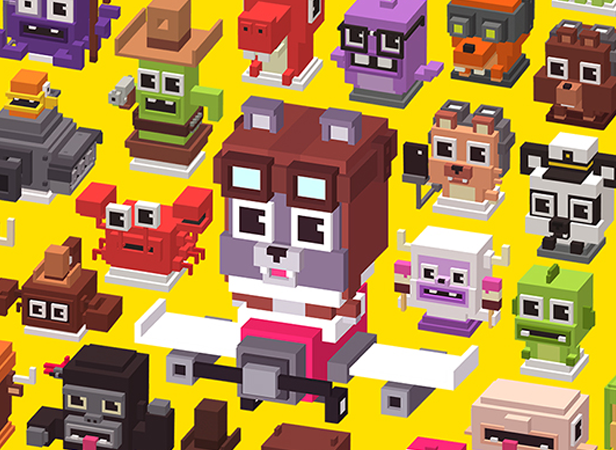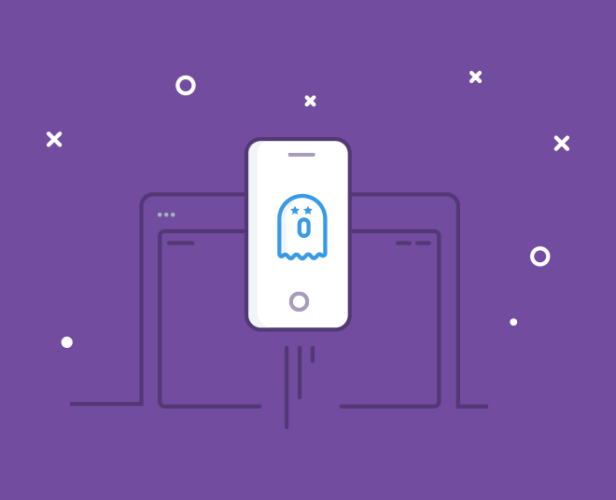Resources > All
Insights and tips about the games industry
Subscribe for gaming insights, industry reports and product updates delivered straight to your inbox.
#Game Deconstructions
The Hyspherical 2 Hype: The secrets behind Monkeybin’s App Store success
Monkeybin is a very special and, some might argue, very lucky studio. While some developers spend the best part of their lives trying to launch a hit game worldwide, the Oslo-based outfit – which only made its debut in 2010 – has managed to see both releases of the timing-based puzzler Hyspherical, and the Runway refined follow up Hyspherical 2, smash the app store charts this month, with the latter achieving Top 10 in the US App Store Free Games chart last week. Downloads for the successor have been through the roof, over 900,000 installs in its first 10 days, no doubt thanks in part to Apple’s decision to push the game in key territories, though the very fact its been promoted by the Cupertino giant in such a manner not only signals success for Monkeybin, but also stands as an example...
#Game Design
Shooting for the Stars: How the devs behind Crossy Road and Shooty Skies became mobile masters
Andy Sum began making games as little more than a hobby more than a decade and a half ago. Sum, who has been one of the leading forces behind two of the biggest mobile hits of the last two years – Crossy Road and relatively new kid on the block Shooty Skies – spent years developing titles for his own entertainment and didn’t actually release his first game commercially until 2009. “My first release was called Faerie Solitaire for the guys at Big Fish Games,” opened Sum, who sat down to talk to us at GameAnalytics about his career to date. “You could say it wasn’t the type of game I’d play myself, but it’s done well. You can still play it today, actually.” Faerie Solitaire didn’t actually fire the starting pistol on his career, however, with Sum – who...
#Strategies
5 Things Devs Need to Know: What’s going to happen in games in 2016
In this topsy turvy industry, there’s one thing we can all be sure of: change is coming. Since the App Store first rolled out in 2008, change is pretty much all the games industry has known, though the new kids on the block don’t always end up staying around too long. One month, all the games press is talking about is Ouya, then suddenly we’re back on to Smart TVs and then…well, we don’t really need to explain what happened to both of those formats, but safe to say they’re no-one’s priority now. The question remains, however, as to just what’s coming next. When 2016 bursts into life in just a few months, what will rule the roost for the following twelve months? What new services will be kingmakers, and what new products will developers need to target in the...
#Data & Analytics
Mobile Games KPI Benchmarks for September 2015
Here we go again with another benchmarks update! As you may know, Benchmarks is a feature that allows you to compare your KPIs to those of 6,000 (and counting) other games tracked by GameAnalytics. Trends in the industry are continuously moving, and we offer you a reference point from which to start your analysis and drive business decisions. If you are wondering what the current situation of the market is, you should log in and check it out. Benchmarks for September are up and ready! Some highlights for September 2015: ARPDAU, ARPPU and Conversion have increased for genres such as Word, Trivia, Sports and Puzzle. Although retention overall has not increased, the same substantial growth is found in session length. This might be a direct consequence of people going back to work after vacation, and therefore, daily commuting....
#Game Design
3 Simple Steps To Improve Your Game’s Graphics
We have a strong tendency to judge a book by its cover. It takes but a split-second for our opinion of a website or any visual design to be tainted, positively or negatively. Coming up with both an appealing art direction and some efficient UX design is no easy task. When someone discovers your game, their first experience is shaped by your art. They likely see a picture of it first, be it from a screenshot, a video, or your game in action. So if you ever wondered why studios bother spending big money on polished art, now you know. But what are we talking about exactly? Resonant visuals are more than just detailed graphics. They have to be both beautiful and meaningful to players. In practice, your game’s aesthetics encompass both the principles of design and your overall art style....
#Ads & Monetization
How to Identify Whales In Your Game
Monetization has been a hot topic in the games industry over the past years, ever since the rise of free to play games. How to optimize monetization, how to define correct pricing buckets or how to better convert players are just a few of the widely discussed questions concerning the topic. In this article, however, we’ll be approaching monetization from a different angle. Rather than discussing how to achieve a high conversion rate, we will dig into the differences in behaviour between converted players and non-monetizers. With this we’re looking to give you some insights into these players’ profiles, based on which you should be able to identify them early in the game. We will be working with two main categories (non-monetizers and monetizers), but 4 cohorts. For granularity purposes, we have broken down the monetizers category into 3 types:...
#Strategies
10 Tips For A Great First Time User Experience (FTUE) In F2P Games
Someone has chosen your app over the 1,500,000 other apps in the App Store or on Google Play. That’s fantastic! The next couple of moments after a user downloads a free-to-play (F2P) game are critical. Users are fickle and it takes a compelling introduction to keep them coming back. Worse yet, the cost of downloading another app is also $0 and takes just a few taps and a few seconds. In order to engage users, game developers should focus on the first time user experience. This is one of, if not the, most crucial parts of any F2P mobile game. The tutorial helps onboard users, convinces them your game provides value, improves retention and helps convert non-payers to paying users. The following tips will help measure and improve the first time user experience in your F2P game. 1. Make Getting...
#User Acquisition
The 7 Deadly Sins of Mobile User Acquisition
App discovery is tough. With over 1,500,000 apps in each of the App Store and Google Play, standing out from the crowd takes some work. Most game developers will need to spend some marketing dollars on paid user acquisition in order to be successful. Below are the seven deadly sins of mobile user acquisition, and how to avoid these hazards. 1. The first sin of mobile user acquisition is not soft launching User acquisition begins with preparation. Soft Launching may be related to overall game design, but it’s extremely important to do before starting user acquisition. No game developer wants to shell out briefcases full of cash in order to drive users to an unpolished game. The return on investment will likely underwhelm if the game has not been tested and vetted by consumers. Soft launching, that is launching...
#Data & Analytics
Mobile Games KPI Benchmarks for July 2015
As you may know, at the end of May we released Benchmarks, feature that helps you bring more context to your analysis by allowing you to compare your KPIs to those of 5,800 (and counting) other games tracked by GameAnalytics. As trends in the industry are constantly moving, we will be updating these numbers monthly. This month’s update was just released and is up now in the tool, for you to check out. Here are the highlights for July 2015: ARPDAU across the GameAnalytics network increased by almost 12% (from 2.37 cents to 2.66 cents), which was driven by increases in both conversion and ARPPU. This means that in July, not only have there been more people spending money in games, but they also spent greater amounts than in June. ARPPU in particular increased by 50...
#ASO
App Store Optimization For Game Developers
App Store Optimization, or ASO, is an essential marketing tactic for most game developers. App Store Optimization refers to improving an app’s keywords, description and other attributes in order to rank higher in that marketplace’s search results. Making your app more visible on its respective platform earns valuable organic (unpaid) downloads. What’s better than free downloads? Many mobile game companies cite organic users as the most valuable type of users. They are more engaged than users acquired through advertising. They monetize at a higher rate than users acquired through advertising. As reported by TUNE, the majority of app users find new apps by searching the app marketplace, but neither Apple nor Google publish exactly what goes into their search algorithm. Below are a set of best practices to increase your organic downloads and app store visibility. Competitive Keyword Analysis Before...
#Game Deconstructions
Building an Empire: The story of Runway’s journey with Kingdom Clicker
It stands to reason that, long before we decided to reveal Runway to the world, we’d already begun the process of picking out partners to work with and – in the case of Kingdom Clicker from Black Bears Games – set in motion our plan of action for giving an indie game the boost it needs to take off. You don’t need us to tell you that, pre Kingdom Clicker, the actual business of publishing a game was new to us here at GameAnalytics. What gave us confidence, however, was our base in analytics. Ever since we entered the mobile analytics scene, we’ve been sure that our grasp on game data was the best in the business, and given that our offer to indies is focused on opening up soft launches to them and trawling over the data they deliver...
#Marketing & Publishing
Softly Does It: 3 Steps to Mastering your Game’s Soft Launch
In one of the largest supermarket outlets in the whole of the UK, just down the road from where your humble blogger lives, sits a kitchen. Built in plain sight, this bizarre little pantry feels a somewhat curious companion to the seemingly endless run of aisles selling all the goods you’d expect a supermarket to sell. Resembling something of a greenhouse – with windows looking out to the rest of the store so those inside can view all and sundry in the midst of their weekly shopping – said kitchen is actually an especially important facet of this supermarket chain’s national operations. The customers may not know it, but in this kitchen, unreleased dishes – radical new ready meals, cakes, soups, drinks, or indeed any foodstuff you can think of – are put through their paces. This is called ‘Consumer...
#Data & Analytics
How To Do An Efficient Game Test
We would love to think that our creations provide a great experience from the get-go. That they are rock-solid, that we don’t need to run tedious series of Beta test sessions. But we have a terrible bias in favor of what we do. We invest so much time and energy into our work that it is hard to take a step back. We are so connected to our creation, so deep into our work that we can’t keep track of the big picture all alone. Our vision is often more clouded than we would like to think. Last year, I drew an Asian-inspired character for a game project. I was quite content with the looks of it, so I shared the illustration publicly. Soon after, a fellow artist took a look at it and commented: “The colors are nice but…...
#Editor's pick
Game data pipeline: Building vs buying
As a large number of studios, publishers, and game developers are heavily relying on data to guide their decisions, they need to decide between building or buying. But which one is more efficient? To assist you in understanding the Total Cost of Ownership (TCO), we broke down the following key considerations: Setup requirements Cost calculation Team needs and recruitment
#Editor's pick
Mobile gaming benchmarks for Q1 2024
Uncover the industry’s performance with Q1 2024 benchmarks. Explore key metrics like retention rates and session engagement to benchmark your games against industry standards. What’s inside? Retention benchmarks for casual, classic, and mid-core games Session length benchmarks for games launched in North America, Europe, the Middle East, and Asia Session count benchmarks across 15 game genres
#Editor's pick
Grow your revenue with Xsolla Web Shop for Mobile Games
“Xsolla anticipated this seismic shift earlier this year, when we launched multiple products that are being actively used by some of the world’s largest game companies to increase profit and build closer relationships with their mobile and pc players. We’ve now combined these products and learnings into an elegant new solution called Xsolla Web Shop for Mobile Games,” said Chris Hewish, President of Xsolla. Through Xsolla Web Shop for Mobile Games, developers can expect significant revenue growth and can reach new players in new geographies previously unavailable to them. This solution solves many challenges developers face; such as discoverability, declining profit margins, lack of control over the user experience, access to localized payment methods, cross game marketing, more efficient user acquisition, effective collaboration with creators and influencers, and much more. Three industry-changing announcements make this opportunity more timely than ever:...
#Editor's pick
2023 Roblox report: Behind the data with GameAnalytics
Download a comprehensive report of Roblox player behavior and game performance based on GameAnalytics data from 2023. This report highlights critical benchmarks and insights to help Roblox creators optimize their games. What’s inside? Devices analysis Players’ daily session frequency Average revenue spent per user Session length and count benchmarks Retention benchmarks Revenue benchmarks
#Editor's pick
The Game Developer’s Handbook to Mastering Data Solutions
Data is the key to success in the ever-evolving landscape of game development. Explore this guide to transform your data into insights using our turn-key data solutions. What’s inside? Our comprehensive guide explores cost-saving strategies and real-world applications for advanced use cases. Learn how to seamlessly integrate data sources, unlock detailed player insights with Player Warehouse, access real-time data with Raw Export, and ensure data privacy compliance.
#Case study
Developing a #1 VR MMO: Ramen VR’s Journey with GameAnalytics
Discover how Ramen VR used data-driven game development to launch "Zenith: The Last City", which became the #1 bestselling game all major VR platforms—including Meta Quest/Rift, Steam and PlayStation VR.
#Editor's pick
Using AI to Supercharge Your Game Art Design
Discover how tweaking AI tool settings can help you generate varied art styles, produce better concepts, and speed up the process from prototype to final design. With AI on your team, creating unique game art has never been easier or faster.
#Editor's pick
Event Design & Tracking Guide for GameAnalytics
Learn how to create an adaptable tracking plan, enabling you to unlock richer insights and maximize the value of your data within GameAnalytics.
#Editor's pick
How studios use DataSuite to find hit games
Learn how successful publishers evaluate hundreds of games per month, to find the next hit game.
#Editor's pick
Among Us VR dev talks about how to create immersive worlds
VR is all about immersion. It’s about allowing players to lose themselves in more than just a game, but a new world. You have to build VR experiences the right way to make this happen. This goal is always top-of-mind for Schell Games. In this interview, we spoke to Schell Games’ Vice President of Product, Charlie Amis, to learn their story. “For VR, you want to make the player feel like they’re actually in the world you’ve created. This isn’t as true or a high priority in PC and console games. If people start to lose that sense of presence and immersion, then a lot of the reason they put the headset on is hurt. They want to go to another world or be someone new. So you need to help them feel like they’re really there and really that...
#Editor's pick
GameAnalytics H1 Update: New Product Improvements!
It’s been a busy time since February, when the largest update in GameAnalytics history was launched. Read on for more information about what’s changed recently, and new functionality coming to the platform very soon.
#Case study
How TapNation uses DataSuite to increase the LTV of 19 hit games by 50% in only 6 months
Smashing obstacles with Giant Rush While they’ve seen huge improvements using DataSuite across their portfolio, one game stands out in particular: Giant Rush. (And not just because the character is huge.) The title has now reached over 140 million downloads. And, through a series of A/B tests and insights from the data they collected, they’ve been able to increase the LTV by a whopping 200% over six months for this specific title. “It’s because we A/B test every day,” Philippe Grazina from TapNation says. “We ask questions like: When are players leaving the game? For example, the boss in Giant Rush. If we spot that they’re leaving at the same point every time, we know we need to make a change. Small details like that really help.” Through these granular insights, TapNation can iterate and improve on their game step...
#Editor's pick
How to Build a Data Warehouse for Games from Scratch
Over our last couple of blogs around data warehouses, we’ve explained how they let you analyze data from across your portfolio and look at what insights you can gather from them. Now, we’ll dive into how to build a data warehouse. What steps do you need to take and what resources will you need? To figure this out, we’ve rounded up the costs, steps, and tools we think you’ll need to get started. Please note, that we haven’t included the cost of running an engineering department (which you’ll need), which can end up being a lot of $$$. What do I need to get started? Before you start, you’ll need to ensure you have the right people. You’ll likely need a software or data engineer, and perhaps an architect or DevOps engineer. You’ll also need to budget for tools like...


























